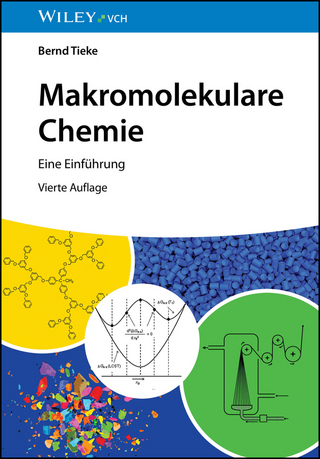
Asymmetric Synthesis of Drugs and Natural Products
CRC Press (Verlag)
978-1-138-03361-0 (ISBN)
Prof. Ahindra Nag is a Professor in the Chemistry Department at IIT Kharagpur. He has more than 3 decades of teaching and research experience. He has published 8 textbooks, 80 research papers in renowned journals and have guided 10 research scholars. He has also been granted with 3 industrial patents. He was invited as a Visting Professor in Academia Sinica (Taiwan), University of Molise ( Italy ) and Universty of Tennesse (USA).
Chapter 1 Basic Stereochemical Approaches to Natural Products and Drugs.
1.1Basic concept of Chirality.
1.2 Meso compounds.
1.3 Tautomerism and Valance Tautomerism.
1.4 Conformation.Fischer Projection and Absolute Configuration.
1.5 Chiral Resolution.
Application of Enantiomers in Drugs and Natural Products
1.7. References
Problems and answers
Chapter- 2: Diastereoselective Addition of Organometallic Reagents to Chiral Carbonyl Compounds
2.1. Introduction
2.2. Models for Asymmetric carbonyl compounds addition
2.3 Models for 1,3 Asymmetric carbonyl addition
2.4. Addition reactions of achiral reagent
2.5. Addition of aldehyde
2.6. Addition of Chiral ketones
2.7. Conclusion
2.8. References
Chapter- 3: Enantiomerically Pure Compounds by Enantioselective Synthetic Chiral Metal Complexes
3.1.Introduction
3.2 History
3.3. Mechanism of Dirhodium(II) – catalysed cycloprpanation reactions
3.4.Electronic modifications4.1.2.Steric modifications
3.5.Dirhodium ( II) carboxylate complexes
3.6.Dirhodium(II) catalysts-derived from chiral N-protected amino acid ligands
3.7.Dirhodium(II) catalysts derived from substituted cyclopropane carboxylate ligands
3.8.Dirhodium (II) carboxamidates complexes
3.9.Effects of axial ligands on Enantioselectivity
3.10. Conclusion
3.11. References
Chapter – 4: Chirality Organization of Peptide and -Conjugated Polyanilines
4.1. Introduction
4.2 Chirality Organization of Peptides
4.2.1 Chirality Organization of Peptides by Using Organic Molecular Scaffold
4.2.2 Chirality Organization of Peptides by Using Organometallic Molecular Scaffold
4.3 Synthesis of Optically Active Polyanilines
4.3.1 Polymerization of Anilines in the Presence of a Chiral Acid
4.3.2 Doping of Emeraldine Bases with a Chiral Acid
4.3.3 Introduction of Chiral Groups into Polyanilines
4.4 Chiral Complexation of Emeraldine Bases with Chiral Complexes
4.5 Application of Optically Active Polyanilines
4.6. Conclusion
4.7.Reference
Chapter -5: Diastereoselective Syntheses of Iminosugars
5.0. Introduction
5.1. Syntheses from the Chiral Pool
5.2. Bio-catalyzed syntheses.
5.3. Asymmetric Syntheses
5.4. Conclusion and Future Directions
5.5. References
Chaptere-6: The use of specific new artificial or semisynthetic bio-catalysts for synthesis of regio- and enantioselective compounds
6.1. Introduction
6.2. Regioselective preparation of monodeprotected esters
6.3. Refrences
Chapter – 7: Bioactive Natural Products and Their Structure-Activity Relationships Studies
7.1 Introduction
7.2 Anti-Microbial Natural Products
7.3 Glutathione S-Transferase Inhibitors
7.4 Acetylcholinesterase Inhibitors
7.5.-Glucosidase Inhibitors
7.6 Anti-Renin Natural Products
7.7. References
Chapter-8: Asymmetric Biocatalysis in Organic synthesis of Natural Products
8.1.Introduction
8.2.Prochirality. meso compounds
8.3.The enzymatic desymmetrization
8.4.Factors affecting an enzymatic reaction enantioselectivity
8.5.Hydrolases
8.6.Application of esterases and proteases in enzymatic desymmetrization of symmetrical compounds
8.7.Application of lipases in enzymatic desymmetrization of symmetrical compounds
8.8.Oxidoreductases
8.9. Application of dehydrogenases in enzymatic reduction of symmetrical compounds
8.10. Application of ene-reductases in enzymatic reduction of symmetrical compounds
8.11.Application of oxidases in enzymatic oxidation reactions of symmetrical compounds
8.12.Application of peroxidases in enzymatic oxidation reactions of symmetrical compounds
8.13. References
CHAPTER -9: Asymmetric Synthesis Of Biaryls And Axially Chiral Natural Products
9.1. Introduction
9.2.Chirality in biaryl compounds
9.3.Bridged and nonbridged biaryl compounds
9.4.Selective construction of biaryl axes
9.5.Oxidative homocoupling in the presence of chiral additives
9.6.Redox-neutral cross-coupling catalyzed by chiral metal complexes
9.7.Transformations of stable but achiral biaryls and conformationally unstable but chiralbiaryls
9.8.Desymmetrization of prostereogenicbiaryl compounds
9.9.Conversion of axially chiral but conformationally unstable biaryl compounds - introduction of additional substituent in the ortho position
9.10.Conversion of axially chiral but conformationally unstable biaryl compounds -bridge formation
9.11.Conversion of axially chiral but conformationally unstable biaryl compounds -cleavage of a bridge
9.12.Asymmetric axially chiral biarylsynthesis by construction of an aromatic ring
9.13.References
CHAPTER-10: Palladium-Catalyzed Asymmetric Transformations Of Natural Products And Drug Molecules
10.1. Introduction
10.2. Palladium-catalyzed asymmetric allylic alkylations
10.3. Asymmetric Intramolecular cyclization reactions
10.4. Palladium-catalyzed carbonylation reactions
10.5. Conclusion and Future Perspectives
10.6.Reference
Chapter-11: Enantioselective Organocatalysis from Concepts to Applications in the Synthesis of Natural Products and Pharmaceuticals
11.1.Introduction
11.2. Enamine Chemistry
11.3.Modes of activation: iminium catalysis
11.4.Cascade reactions based on iminium/enamine chemistry
11.5 Application in total synthesis of organocascade reactions: Synthesis of Strychnine
11.6.Conclusions
11.7.References
Chapter-12: Chiral Building Blocks for Drugs Synthesis via Biotransformations
12.1. Introduction
12.2. Anticancer Drugs
12.3 Small molecules
12.4 Antidiabetic Drugs.
12.5. Anti-inflammatory Drugs: Profens
12.6. Drugs for treatment of Cardiovascular diseases
12.7. Anticholesterol drugs
12.8 Antihypertensive drugs
12.8.1 β-BLOCKERS
12.9 ACE inhibitors
12.10 Calcium channel blockers
12.11. Conclusion
12.12.References
Chapter-13: Chiral Medicines
13.1 Introduction
13.2. Sitagliptin
13.3. Aprepitant
13.4. Simvastatin
13.5. Paroxetine
13.6. Levetiracetam
13.7 Pregabalin
13.8. Sertraline
13.9. Conclusions
13.10. References
Chapter -14: Drug Delivery Systems
14.1. Introduction
14.2. Classification of drugs
14.3. Prodrug
14.4.Mode of action of drug
14.5. Sites of Drug Action
14.6.Goal of Drug delivery
14.7. Safety considerations
14.8.Drug Distribution
14.9.Further reading
Problems to be solved
| Erscheinungsdatum | 24.08.2017 |
|---|---|
| Zusatzinfo | 61 Tables, black and white; 603 Line drawings, black and white; 1 Halftones, black and white |
| Verlagsort | London |
| Sprache | englisch |
| Maße | 178 x 254 mm |
| Gewicht | 1043 g |
| Themenwelt | Medizin / Pharmazie |
| Naturwissenschaften ► Biologie | |
| Naturwissenschaften ► Chemie ► Organische Chemie | |
| Technik | |
| ISBN-10 | 1-138-03361-8 / 1138033618 |
| ISBN-13 | 978-1-138-03361-0 / 9781138033610 |
| Zustand | Neuware |
| Informationen gemäß Produktsicherheitsverordnung (GPSR) | |
| Haben Sie eine Frage zum Produkt? |
aus dem Bereich


